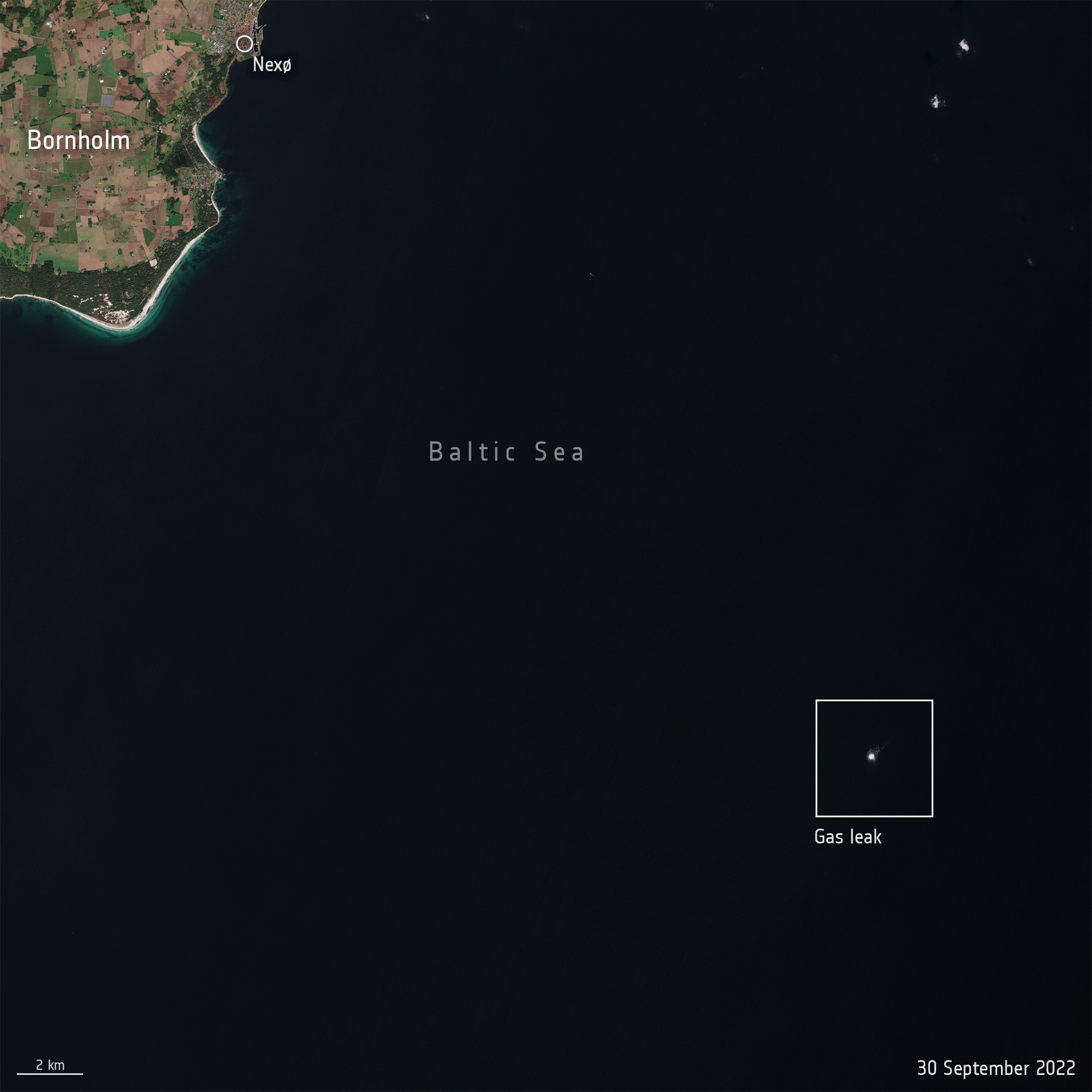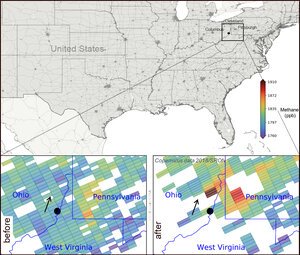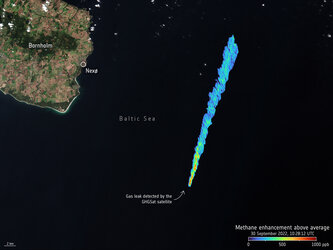
A three-tiered approach for methane detection
This image shows the tiered satellite observation of a methane leak in Algeria on 4 January 2020.
Near the Hassi Messaoud oil/gas field in Algeria, researchers from the SRON Netherlands Institute for Space Research identified a continuous methane emission from a leaking facility for six days. The methane plume, detected by Sentinel-5P over Algeria on 4 January 2020, extended for more than 200 km northeast.
The team used a Sentinel-2 image to zoom in on the plumes’ origins and pinpointed the exact location of the leak to be an oil/gas well, while Sentinel-3 showed the leak continued for six days.
In a recent paper published in Remote Sensing of Environment, researchers found that the Sentinel-3 satellites can retrieve methane enhancements from its shortwave infrared band measurements. Impressively, it can detect the largest methane leaks of at least 10 tonnes per hour, depending on factors like location and wind conditions, every single day. This puts it in a unique position to identify and monitor methane leaks.
Read full story: Trio of Sentinel satellites map methane super-emitters





